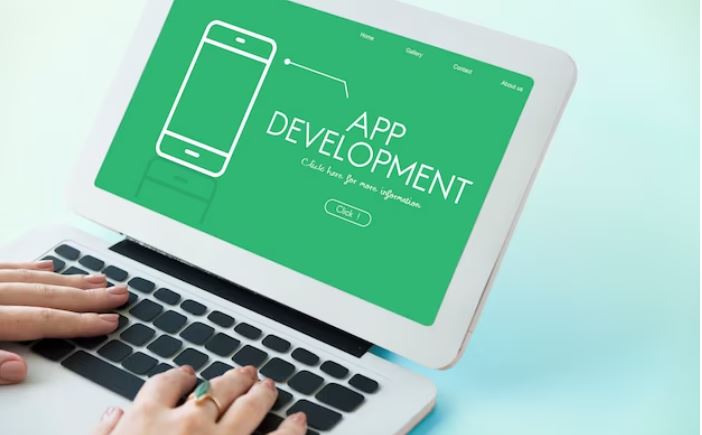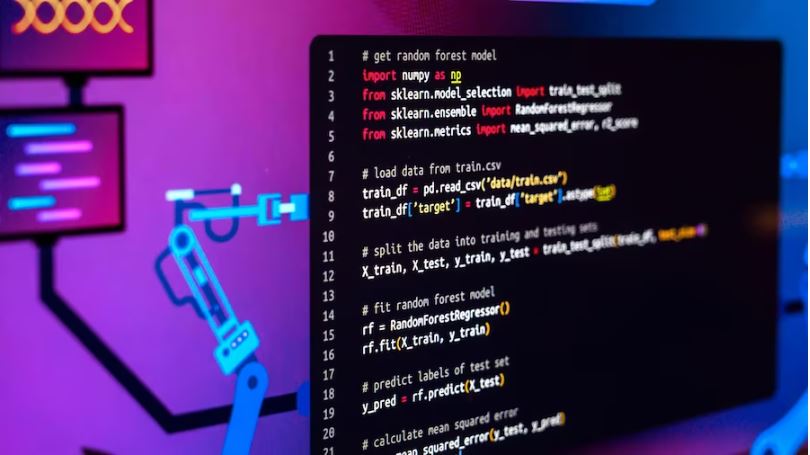Top Mobile App Development tools Software for Andriod & IOS
What is Mobile App development tools?
Mobile application development tools are software applications, frameworks, or platforms that aid developers in building, testing, and deploying mobile applications. These tools provide a range of functionalities, from writing code to designing user interfaces, testing the app’s functionality, managing project tasks, and analyzing app performance. Mobile app development tools are crucial for streamlining the development process and ensuring the creation of high-quality, efficient, and user-friendly mobile applications.
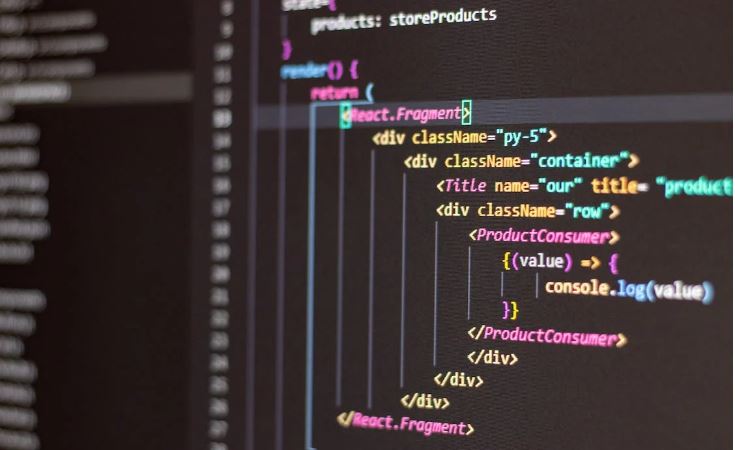
What is Mobile Application Development?
Mobile application development tools refers to the process of creating software applications specifically designed to run on mobile devices, such as smartphones and tablets. These applications are developed to leverage the unique features and capabilities of mobile devices, including touchscreens, GPS, cameras, and various sensors.
Why Mobile Application Development tools?
Mobile application development tools are essential because they significantly simplify and expedite the app development process, allowing developers to create high-quality mobile applications with greater efficiency and effectiveness.

Recommended Mobile App Development Tools
1. Android Studio

Android Studio is Google’s official Integrated Development Environment (IDE) designed specifically for Android mobile application development tools. It offers a feature-rich environment for writing, testing, and debugging Android applications. Key features include an advanced code editor with intelligent code completion, visual layout editor for building UIs, performance profiling tools for optimizing app performance, and support for multiple programming languages like Java, Kotlin, and C++.
Read Also How to Earn Money Tech Micro Niche
Features
- Powerful code editor with intelligent code completion
- Visual layout editor for designing UIs
- Advanced debugging tools for identifying and fixing issues
- Support for multiple programming languages like Java and Kotlin
- Built-in emulator for testing apps on different Android devices and versions
2. Xcode
Xcode is Apple’s official IDE for iOS, iPadOS, macOS, watchOS, and tvOS app development. It provides developers with a powerful suite of tools for creating robust and polished Apple ecosystem applications. Key features include Interface Builder for designing UIs visually, SwiftUI for declarative UI development, Instruments for app performance analysis, and support for Swift and Objective-C programming languages.
Features
- Interface Builder for visually designing user interfaces
- SwiftUI framework for declarative UI development
- Instruments for performance analysis and debugging
- Supports Swift and Objective-C programming languages
- iOS simulator for testing apps on various Apple devices and OS versions
3. Visual Studio Code
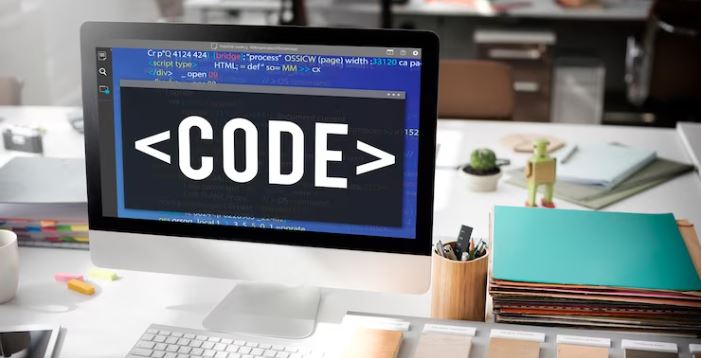
Visual Studio Code (VS Code) is a lightweight, highly extensible code editor developed by Microsoft. While not an IDE itself, it supports a wide range of extensions and plugins, making it a popular choice for mobile application development tools across multiple platforms. Key features include support for various programming languages, integrated debugging, Git integration, and a vast marketplace of extensions for mobile app development frameworks like React Native and Flutter.
Features
- Lightweight and highly customizable code editor
- Integrated debugging and Git integration
- Support for various programming languages through extensions
- Rich marketplace with extensions for mobile app development frameworks
- Ability to customize and tailor the editor to individual preferences
4. Firebase
Firebase is a comprehensive mobile development platform offered by Google. It provides a set of backend services and tools that simplify the process of building and scaling mobile apps. Key features include Firebase Authentication for user authentication, Cloud Firestore for real-time NoSQL databases, Firebase Cloud Messaging for push notifications, and Firebase Analytics for monitoring user behavior and app performance.
Features
- Firebase Authentication for easy user authentication
- Cloud Firestore for real-time NoSQL databases
- Firebase Cloud Messaging for sending push notifications
- Firebase Analytics for monitoring user behavior and app performance
- Firebase Hosting for deploying and hosting web assets
5. TestFlight

TestFlight is Apple’s official beta testing platform for iOS app development. It allows developers to invite internal and external testers to try out pre-release versions of their apps. Key features include seamless over-the-air distribution of beta builds, detailed tester feedback collection, crash reporting, and the ability to manage multiple testing groups for different app versions.
Features
- Over-the-air distribution of beta app versions to testers
- Easy invitation and management of internal and external testers
- Tester feedback collection and communication within the app
- Crash reporting and analysis for identifying and resolving issues
- Support for testing multiple app versions simultaneously
C Sharp and Sequel Programming Languages
6. HockeyApp
HockeyApp, now integrated into App Center by Microsoft, is a widely-used beta distribution and crash reporting tool for mobile app development across various platforms. Key features include easy beta distribution, crash reporting and analysis, user feedback collection, and support for iOS, Android, and Windows apps.
Features
- Beta distribution to testers, both internal and external
- Crash reporting and analysis to diagnose and fix app crashes
- User feedback collection for gathering input from testers
- Support for iOS, Android, and Windows app platforms
- Integration with other App Center services for end-to-end mobile app development
7. JIRA
JIRA is a popular project management tool commonly used in mobile app development teams to plan, track, and manage projects efficiently. Key features include customizable workflows, issue tracking, real-time collaboration, and seamless integration with other development tools, making it a valuable asset for project managers and development teams alike.
Features
- Customizable workflows for organizing and tracking tasks
- Issue tracking and assignment to team members
- Project planning and roadmap creation for development milestones
- Real-time collaboration and communication among team members
- Integration with other development tools for seamless workflow management
iPhone Application Development Tools
8. SwiftLint
SwiftLint is a static code analysis tool specifically designed for Swift projects. It enforces coding style guidelines and best practices, helping developers maintain clean and consistent code throughout their projects. By integrating SwiftLint into the development workflow, teams can identify and fix potential code issues early, leading to higher code quality and better code reviews.
Features
- A static code analysis tool for Swift projects.
- Enforces coding style and best practices.
- Helps maintain clean and consistent code.
9. Appium
Appium is an open-source mobile app automation testing tool that supports both iOS and Android platforms. It enables developers and testers to automate the testing of mobile applications on real devices and simulators/emulators. Appium is language-agnostic, allowing testers to write test scripts in various programming languages like Python, Java, and JavaScript, making it a versatile choice for cross-platform app testing.
Features
- An open-source tool for mobile app automation testing.
- Supports testing on real devices and simulators.
- Works for iOS and Android apps using various programming languages.
10. CocoaPods
CocoaPods is a popular dependency manager for iOS projects. It simplifies the process of integrating third-party libraries and frameworks into Xcode projects by handling their versioning and updates efficiently. CocoaPods manages the project’s dependencies, ensuring that the latest compatible versions of libraries are used, reducing conflicts and simplifying the maintenance of external dependencies.
Features
- A dependency manager for iOS projects.
- Simplifies the integration of third-party libraries into Xcode projects.
- Manages versioning and updates of libraries efficiently.
11. Realm

Realm is a mobile database designed specifically for iOS and Android app development. It offers real-time data synchronization and offline support, making it suitable for apps that require seamless data integration between devices. Realm provides an easy-to-use, object-oriented API that simplifies database operations, leading to faster development and improved app performance.
Features
- A mobile database designed for iOS and Android app development.
- Offers real-time data synchronization and offline support.
- Provides a simple and efficient object-oriented API.
12. Fastlane
Fastlane is an automation tool that simplifies various repetitive tasks involved in iOS and Android app deployment. It automates tasks like building, testing, code signing, and deploying apps to the App Store and Google Play Store. With Fastlane, developers can set up a streamlined Continuous Integration and Continuous Deployment (CI/CD) process, enabling rapid and reliable app releases.
Features
- An automation tool for iOS and Android app deployment.
- Automates repetitive tasks like building, testing, and deploying.
- Integrates with popular CI/CD platforms.
13. Fabric (Crashlytics)
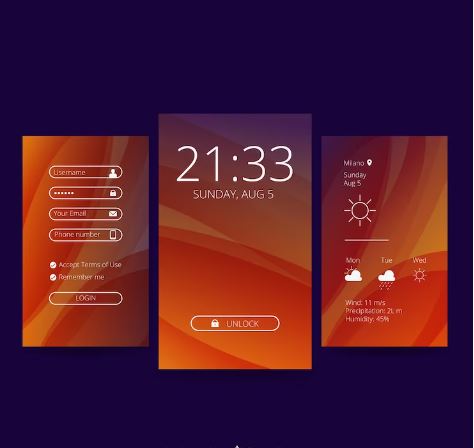
Fabric, formerly known as Crashlytics, is a mobile development platform by Google (previously owned by Twitter). It provides essential services like crash reporting, analytics, and beta distribution. Crashlytics helps developers identify and resolve crashes quickly by providing detailed crash reports, while the analytics feature helps monitor app performance and user behavior. The beta distribution feature simplifies the process of testing pre-release versions of the app with selected testers.
Features
- A mobile development platform by Google (formerly Twitter).
- Provides crash reporting, analytics, and beta distribution services.
- Helps developers monitor app stability and performance.
17 Best Free YouTube Video Downloader Apps (2024)
14. Swift Playgrounds:
Swift Playgrounds is an interactive development environment created by Apple to help users learn Swift programming. It is available on both iPad and macOS. Swift Playgrounds provides an engaging and visual way to experiment with Swift code, making it an excellent tool for beginners and students to get started with programming and understand Swift concepts in a playful manner.
Features
- An interactive development environment by Apple for learning Swift programming.
- Ideal for beginners to experiment and practice Swift code on iPad and macOS.
Application Development Frameworks
Mobile Application development tools frameworks are software tools or platforms that provide a structured approach to building applications. They offer a foundation and structure for developers to streamline the development process, reduce code complexity, and speed up app creation. Here are some popular app development frameworks:
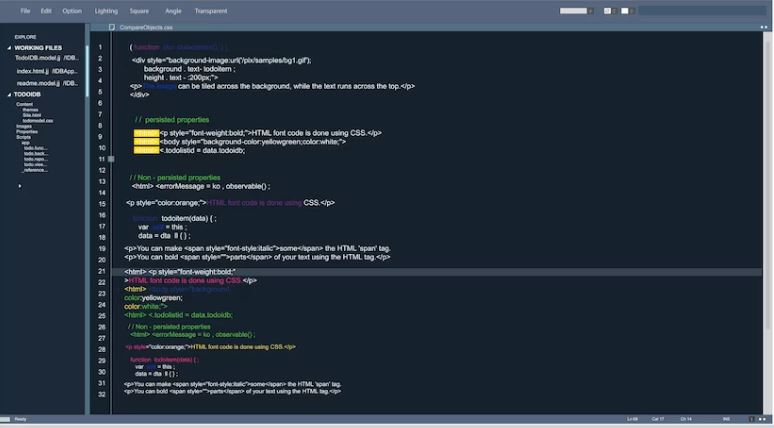
15. React Native
Developed by Facebook, React Native allows building cross-platform mobile apps using JavaScript and React. It allows developers to reuse code between iOS and Android, resulting in faster development.
Features
- Cross-platform development: Write code once and deploy it on both iOS and Android platforms.
- Native-like performance: Utilizes native components for smoother user experience.
- Hot reloading: Allows developers to see changes instantly without recompiling the entire app.
- Large community support: Extensive community with many libraries and resources available.
- Integration with native modules: Access to native APIs through JavaScript.
16. Flutter
Developed by Google, Flutter is a UI toolkit for building natively compiled applications for mobile, web, and desktop from a single codebase. It uses Dart as the programming language.
Features
- Hot reload: Instantly see code changes without restarting the app.
- Expressive UI components: Offers a rich set of customizable widgets for creating appealing UIs.
- Cross-platform development: Build for multiple platforms using a single codebase.
- High performance: Utilizes the Skia graphics engine for smooth and fast rendering.
- Dart language: Flutter uses Dart, which is easy to learn and offers robust performance.
17. Xamarin
Owned by Microsoft, Xamarin is a framework that allows developers to build cross-platform mobile apps using C# and .NET. It offers native performance and access to device-specific features.
Features
- Cross-platform development: Share code across iOS, Android, and Windows platforms.
- Native performance: Apps have access to native APIs and run with native-like performance.
- Extensive libraries: Xamarin provides a wide range of libraries for various functionalities.
- Xamarin.Forms: Allows developers to build UIs using XAML or C# for rapid development.
- Visual Studio integration: Seamless integration with Microsoft Visual Studio IDE.
18. Ionic
An open-source framework that uses web technologies like HTML, CSS, and JavaScript to build hybrid mobile apps. It provides a library of UI components and supports various platforms.

Features
- Cross-platform development: Develop apps for iOS, Android, and Progressive Web Apps (PWAs).
- UI components: Provides a library of pre-designed and customizable UI components.
- Cordova plugins: Access to native device features using Cordova plugins.
- Angular integration: Supports Angular for creating dynamic and interactive apps.
- Progressive Web Apps (PWAs): Can convert apps into PWAs for broader reach.
19. NativeScript
Developed by Progress, NativeScript allows building native mobile apps using JavaScript, TypeScript, or Angular. It provides direct access to native APIs and delivers high performance.
Features
- Cross-platform development: Develop native apps for iOS and Android from a single codebase.
- Direct access to native APIs: Full access to native APIs using JavaScript or TypeScript.
- Angular and Vue.js support: Integrates with popular frontend frameworks.
- Performance-focused: NativeScript apps perform comparably to fully native apps.
- Hot module replacement: See code changes instantly during development.
20. PhoneGap/Cordova:
Apache Cordova, also known as PhoneGap, is an open-source framework for building cross-platform mobile apps using web technologies. It wraps web apps in a native shell for distribution.
Features
- Cross-platform development: Build apps for multiple platforms using web technologies.
- Access to native features: Access native device features using JavaScript APIs.
- Large plugin ecosystem: Extensive collection of plugins for added functionalities.
- Easy development process: Ideal for web developers familiar with HTML, CSS, and JavaScript.
- Rapid prototyping: Quick development and testing on multiple devices.
What is Gartner?
21. SwiftUI:
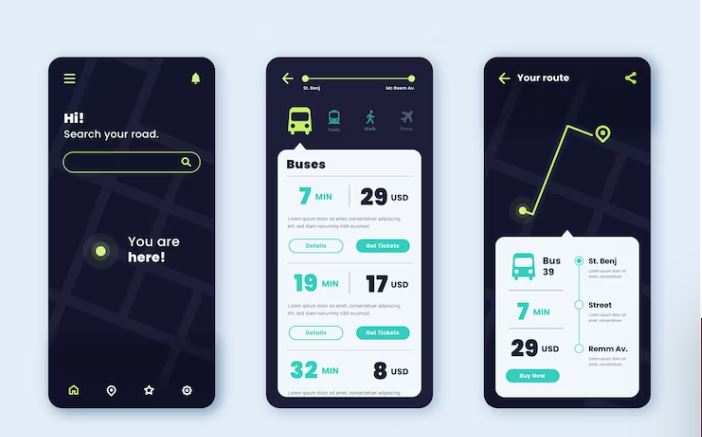
Introduced by Apple, SwiftUI is a declarative UI framework for building iOS, macOS, watchOS, and tvOS apps. It enables rapid prototyping and UI development with less code.
Features
- Declarative syntax: Write UI code declaratively, reducing boilerplate code.
- Live Preview: See changes in real-time while editing SwiftUI code.
- Cross-platform: Supports iOS, macOS, watchOS, and tvOS app development.
- Integration with Swift: SwiftUI is built with Swift, ensuring seamless code integration.
- Interactive and dynamic UI: Create animations and interactions with ease.
Mobile Application Development Payment Tools
Mobile application development tools payment refer to the software and platforms that enable businesses and developers to handle financial transactions and payments within mobile apps. These tools provide secure and seamless payment processing, allowing users to make purchases, subscribe to services, and conduct various financial transactions directly from their mobile devices. Here are some popular mobile application development payment tools:
22. Apple Pay
Apple Pay is Apple’s mobile payment and digital wallet service that allows iOS users to make purchases securely using their iPhone, iPad, or Apple Watch. It supports contactless payments, in-app purchases, and online transactions.
Features
- Secure and encrypted payments using Touch ID or Face ID.
- In-app purchases and transactions without sharing card details.
- Support for various credit and debit cards, including major banks and issuers.
- Integration with apps and websites through Apple Pay API.
23. Google Pay
Google Pay, formerly known as Android Pay, is Google’s mobile payment platform that enables Android users to make contactless payments, in-app purchases, and peer-to-peer transactions using their Android devices.
Features
- Contactless payments using NFC technology.
- Seamless integration with Android apps through Google Pay API.
- In-app purchases and transactions without card information exposure.
- Support for loyalty cards, gift cards, and rewards programs.
24. Stripe

Stripe is a popular payment processing platform that provides APIs and SDKs to facilitate seamless payment integration within mobile apps. It supports credit card payments, Apple Pay, Google Pay, and other payment methods.
Features
- Extensive payment processing capabilities for credit/debit cards, digital wallets, and more.
- Advanced fraud protection and security measures.
- Subscription billing and recurring payments support.
- Customizable payment forms and checkout options.
25. PayPal
PayPal is a well-known digital payment platform that allows users to make secure transactions using their PayPal accounts or credit/debit cards. It offers APIs for easy integration into mobile apps.
Features
- Trusted and widely recognized digital payment platform.
- Easy integration using PayPal APIs and SDKs.
- Support for payments using PayPal accounts or credit/debit cards.
- Buyer and seller protection for secure transactions.
26. Square
Square offers a range of payment tools, including card readers and APIs, allowing businesses to accept credit card payments directly from their mobile apps.
Features
- Mobile card readers for in-person payments.
- Developer-friendly APIs for app integration.
- Customizable checkout solutions for a seamless payment experience.
- Support for contactless and chip-enabled payments.
27. Braintree
Braintree, owned by PayPal, is a comprehensive payment platform that offers easy integration for mobile app developers. It supports various payment methods, including credit cards, PayPal, Venmo, and more.
Features
- Support for various payment methods, including credit/debit cards, digital wallets, and Venmo.
- One-touch payments with PayPal and Venmo for quick checkout.
- Advanced fraud detection and security features.
- Subscriptions and recurring billing capabilities.
28. Adyen
Adyen is a global payment platform that provides a single API integration for businesses to accept payments from various sources, including credit cards, digital wallets, and local payment methods.
Features
- Single API integration for various global payment methods.
- Dynamic 3D Secure for added security in online transactions.
- Real-time data insights for analyzing payment performance.
- Supports multiple currencies and global expansion.
29. Razorpay
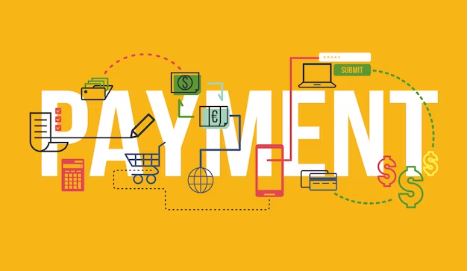
Razorpay is an Indian payment gateway that offers simple integration for mobile app developers, supporting credit/debit cards, UPI, and other digital payment methods.
Features
- Simple integration with customizable payment pages.
- Support for UPI, credit/debit cards, net banking, and digital wallets.
- Easy refund and dispute management.
- Built-in analytics for tracking payment trends.
30. Authorize.Net
Authorize.Net is a payment gateway service that allows businesses to accept credit card payments securely within their mobile apps.
Features
- Wide acceptance of credit/debit cards, including Visa, Mastercard, and American Express.
- Recurring billing and subscription management options.
- Fraud detection suite for enhanced security.
- Hosted payment forms for PCI DSS compliance.
These payment tools offer a wide range of features to cater to different business needs and provide developers with secure and seamless payment integration options for their mobile apps.
Mobile Application Development Push notification Tools
Mobile application development tools which are use to push notification tools software platforms that enable app developers to send push notifications to users’ mobile devices. These tools provide a streamlined and efficient way to engage with app users, send updates, reminders, and personalized messages to enhance user retention and interaction. Here are some popular mobile application development push notification tools:
31. OneSignal
OneSignal is a popular and versatile push notification platform that caters to various platforms, including iOS, Android, Web, and Email. Its user-friendly dashboard allows developers to easily send personalized and targeted push notifications to app users. OneSignal offers advanced segmentation capabilities, enabling developers to categorize users based on their behavior and preferences, leading to more relevant and engaging messages. Real-time analytics provide valuable insights into notification delivery rates, open rates, and user engagement, allowing developers to optimize their notification campaigns for better results.
Features
- Supports push notifications for iOS, Android, Web, and Email.
- Offers segmentation and targeting for personalized messaging.
- Provides real-time analytics to track notification performance.
32. Firebase Cloud Messaging (FCM)
Firebase Cloud Messaging, a part of Google’s Firebase platform, is a reliable and scalable cloud-based messaging service. It allows developers to send push notifications to iOS, Android, and Web apps with high delivery rates and efficiency. FCM seamlessly integrates with other Firebase services, such as Firebase Analytics, providing a comprehensive view of user engagement. This deeper insight helps developers understand how users interact with notifications and the app. FCM is easy to implement and offers robust performance, making it a popular choice for push notification delivery.
Features
- Google’s cloud-based messaging service for Android, iOS, and Web apps.
- High delivery rates and reliability.
- Integrates with Firebase Analytics for deeper insights.
33. Pusher
Pusher is a real-time communication platform that includes push notification capabilities for cross-platform app development. Developers can utilize Pusher’s APIs to send push notifications to multiple platforms, ensuring broader reach and user engagement. Besides push notifications, Pusher also facilitates real-time chat, in-app notifications, and live event streaming. Its versatility and ease of use make it a preferred choice for developers looking to integrate real-time features and push notifications into their apps.

Features
- Real-time communication platform with support for push notifications.
- Provides APIs for sending notifications to multiple platforms.
- Offers features like in-app notifications and email fallback.
34. Airship
Airship is a comprehensive push notification platform that focuses on personalized messaging. Developers can segment their audience based on user behavior and preferences, enabling targeted and automated notifications. The platform supports personalized in-app messages, in addition to push notifications, ensuring a cohesive user communication experience. With its advanced automation and scheduling capabilities, Airship helps developers engage users at the right time, leading to improved app interactions and user retention.
Features
- Offers personalized push notifications with audience segmentation.
- Supports automation and scheduled notifications.
- Provides in-depth analytics and performance tracking.
35. Pushwoosh
Pushwoosh is a versatile push notification service that supports multiple platforms, including iOS, Android, Web, Windows, and macOS. It offers features like rich media push, enabling developers to send notifications with images, videos, and interactive buttons. With geotargeting capabilities, Pushwoosh allows developers to send location-based notifications for targeted and context-aware messaging. The platform provides real-time analytics to monitor notification performance and user engagement, helping developers optimize their push notification campaigns.
Features
- Multi-platform push notification service for iOS, Android, Web, and more.
- Allows rich media push with images and videos.
- Supports geotargeting for location-based notifications.
36. One2many
One2many is a global push notification service that specializes in high-throughput delivery. It supports push notifications across various mobile carriers, ensuring a broad reach for messages. The platform is capable of handling large-scale push notification campaigns, making it suitable for enterprises and apps with a massive user base. Developers can track the status of their messages in real-time, ensuring the successful delivery of push notifications to their users.
Features
- Provides high-throughput push notification delivery.
- Supports global reach with multi-carrier delivery capabilities.
- Offers real-time message status updates and tracking.
37. PushBots
PushBots is a cross-platform push notification service that supports iOS, Android, and Web apps. It provides a simple integration process with popular app development frameworks and platforms. Developers can easily schedule and automate push notifications, streamlining their communication strategies. PushBots offers segmentation options to categorize users based on various attributes, facilitating personalized messaging for enhanced user engagement. The platform also includes advanced analytics to monitor the effectiveness of push notification campaigns.
Features
- Offers cross-platform push notifications for iOS, Android, and Web apps.
- Provides easy integration with popular app development frameworks.
- Includes advanced targeting and scheduling options.
38. Leanplum
Leanplum is a comprehensive mobile marketing platform that includes push notification capabilities. It emphasizes personalized messaging based on user behavior and preferences, enabling developers to send targeted and relevant push notifications. With A/B testing features, developers can experiment with different notification strategies to optimize their campaigns. Leanplum also supports in-app messaging, allowing developers to engage users within the app interface for a seamless communication experience.
Features
- Offers personalized push notifications based on user behavior and preferences.
- Provides A/B testing for optimizing notification campaigns.
- Supports in-app messaging for better user engagement.
How to Choose best Mobile App Development Tool
To choose the best mobile application development tools, you should consider these factors:
- Ensure the tool is easy to use and has a user-friendly interface.
- Check if the tool fits your budget and offers value for money.
- See if the tool supports the app’s desired architecture and technology.
- Look for flexibility to customize the tool according to your project’s needs.
- Consider how the tool handles app development stages from start to finish.
- Check if the tool can seamlessly integrate with other tools you use.
- Verify that the tool provides robust security features and helps optimize app performance.
- Ensure the tool can accommodate your app’s growth and handle increased user demands.
- Choose a tool that allows hassle-free updates and upgrades as needed.

